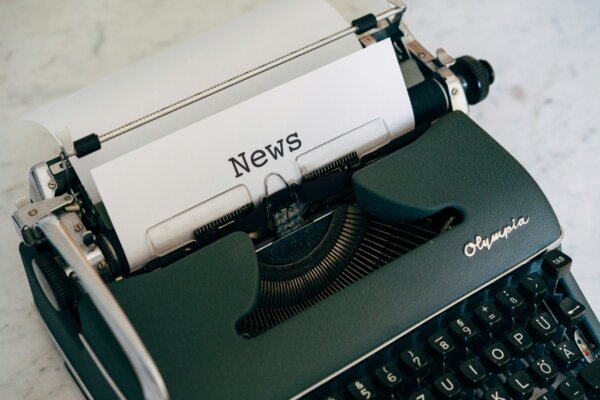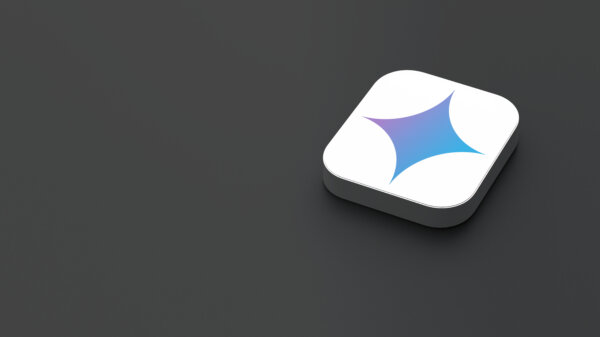Ideate, Test, Execute: Using ChatGPT to Build Creative Campaigns Part 2
Part 2 – My Son is also Named Bort
This is Part 2 of seeing if ChatGPT can create a creative campaign similar to our Digital PR agency.
The first one was a relative failure, which you can read about here. The idea is that each campaign increases in complexity in both design and development, (and hopefully) results too. Let’s see how we get on:
OpenAI recently announced a whole host of new features. As well as the terrifying prospect of AIs talking to AIs about the humans operating them, they’ve also released a new ChatGPT model, 4o. As always, it promises to be both faster, smarter and more efficient than its predecessors. As such, let’s see if it can improve on the frankly poor effort from our last attempt at making a creative campaign for Digital PR.
The premise for this project came from another proven Digital PR campaign and format. I knew I wanted to use Spotify and the API, and remembered a previous campaign looking at the most popular names used in song titles. Just by Googling that phrase now, you can see that it was able to get coverage as a topic:
So our aim here is to add to this story. One way to enhance this is to find a way of personalising the story. Those who look at the list might rush to see where their name features, and, unless your name is Maria or Johnny, it’s unlikely it does at all.
So what about the one-hit-wonders, all the Arabellas of the world? What of the Saras, the Bennies or the Laylas? If you’re not the most popular in this story you just don’t feature.
So our aim is to make this experience more personalised for the user whilst also enhancing it beyond a top 10 list.
However, we don’t want to lose the top 10 story entirely, because as we have seen from our research, it’s what gets links. We still need breadth of appeal and a winning headline if our goal is to get links and coverage from mainstream press.
So, our campaign needs to:
1. Still have an ability to get a ‘Top 10 most popular names in songs’ angle for press appeal
2. Have an increased search functionality and is an enhanced experience from just a ‘Top 10 list’
3. Allow people with more unique names to discover the songs that are about them
4. Have a Simpsons reference in it
That last one isn’t necessary, but having spoken to one of my colleagues about the idea, our previous attempt being on theme, and how the campaign reminded me of the Bort scene from The Simpsons, they said this:
So we’re leaning into it.
Anyway, to the the first prompt:
Prompt: “Can you write me code for a simple HTML + JS app that will use the Spotify API to allow me to discover a list of songs that have my name. For reference, my name is Alex”
And this was the result:
Pretty basic. But, crucially, I forgot to ask it to design it better, so:
Prompt: Please improve the design of the application too with some separate CSS code that will give it a ‘modern sleek app design’
Looks a bit better. Still, design isn’t our main worry right now. Although ChatGPT has put in all the code, The tool doesn’t work, because as it flagged in the first reply, I would need to set it up with API access before it could fetch any results for me.
I have worked with Spotify APIs before, but in the spirit of the experiment, I asked it how to do this, and its answer was helpful, providing me with a step by step process. (Note: Some changes to the Spotify site did require me to check other sources).
It also anticipated some other issues in its own code. Namely that the way it was configured at the moment it would also return all results featuring my name, not just titles, which as I stated, was the point of the app:
Once I provided the Client ID and Client Secret, and asked it to adjust the logic to just include song titles, it was able to provide results:
Perfect. I checked Spotify to see it wasn’t hallucinating, and all seemed well.
So now that we know it works we can start to iterate to make it look better, and provide a better experience for the user:
Prompt:
- Please add a total count for your name at the bottom
- Can you organise the songs in order of most plays?
- Let’s make the subtitle ‘Most popular ‘Search Term’ songs’
- Add in the thumbnails of the album to the right
- Let’s change the family font to Montserrat
- Add in an intro explaining the concept
Which turns our results into this:
Each of the links is clickable and opens in the user’s client. It also feels a bit more like Spotify because we used an approximation of their font family, and the Top 10 ranking based on popularity makes you feel like it’s an organised (and believable) list.
Crucially, I didn’t do all of this in one go, it was probably 10-15 prompts of little changes, some of which, like font sizes and placements, I did manually in the code before asking it to put it all together.
So if we return to our brief and see what we have crossed off:
1. Still have an ability to get a ‘Top 10 most popular names in songs’ angle for press appeal
2. Have an increased search functionality and is an enhanced experience from just a ‘Top 10 list’
3. Allow people with more unique names to discover the songs that are about them
4. Has a Simpsons reference in it
Points 2 and 3 are a success. But what about points 1 and 4?
Well, for the Top 10 list, we will have to create our own, because we’ll have different results from the previous iterations of that campaign. Mostly because our list will be ‘the most popular names in songs on Spotify’ but also because we have added a few exclusions for UX purposes, including eliminating titles with feat. and remixes, as they often included the collaborating artist or DJ name instead (similarly Linda and Georgia are popular winners in these lists, with most methodologies ignoring that the former means beautiful in Spanish and the latter is a country/state). We will include our permanent Top 10 list underneath the search results, so that we can include it in press releases and outreach and to provide more context for the user.
The Simpsons reference was settled on being in the name of the tool, and came courtesy of Lauren via ChatGPT:
We had to whittle it down, and I knew the design would require human input. I know that image generation is getting better, but it does (famously) struggle with words:
Instead, I found a free template on Figma for licence plates, and made it myself in five minutes. So our final site looks like this:
You can view the live version here.
We haven’t yet tested out whether or not this could get links. But there are steps that have improved upon previous processes already in the production stage, namely that ChatGPT was able to code a properly interactive app that makes calls to a Spotify client. But, there are still some concerns:
- The search functionality isn’t unique to names. Technically it’s just bringing back song titles featuring your inputted word. It still relies on the user using the tool as designed.
- It still looks very basic. I’m still going for function over form in order to get the tool to work as designed. It definitely requires someone with a bit more know-how here to make it look better (whilst that could still potentially be achieved by prompting)
- The tool is quite flimsy. I am sure there are a bunch of easy code fixes that would enable this to be done much more robustly. Right now it breaks a lot, takes a while to retrieve the information required, and does still hallucinate little changes to the code on different tries that I need to ask it to row back.
In total, the finished site above was achieved in around 2 hours. A lot of the time was spent working out the Spotify code elements. This is definitely a time save, but what we are left with is a product that might look better than it actually is under the surface.
As we approach Phase 2.5, which is to get this properly hosted and to outreach it for links, it’s whether or not the added functionality and personalisation will be enough, or if we could have just used a bog standard Top 10 list in the first place to achieve the same results. There is something to be said that, knowing a top 10 list of popular names already gets links, creating something like this is an extra reason for a journalist to include a link to your campaign.
In the third and final blog, we will reveal the results of the promotion (and discover how I’ll keep this thematically on The Simpsons whilst also increasing the creativity, complexity and results of the test).



